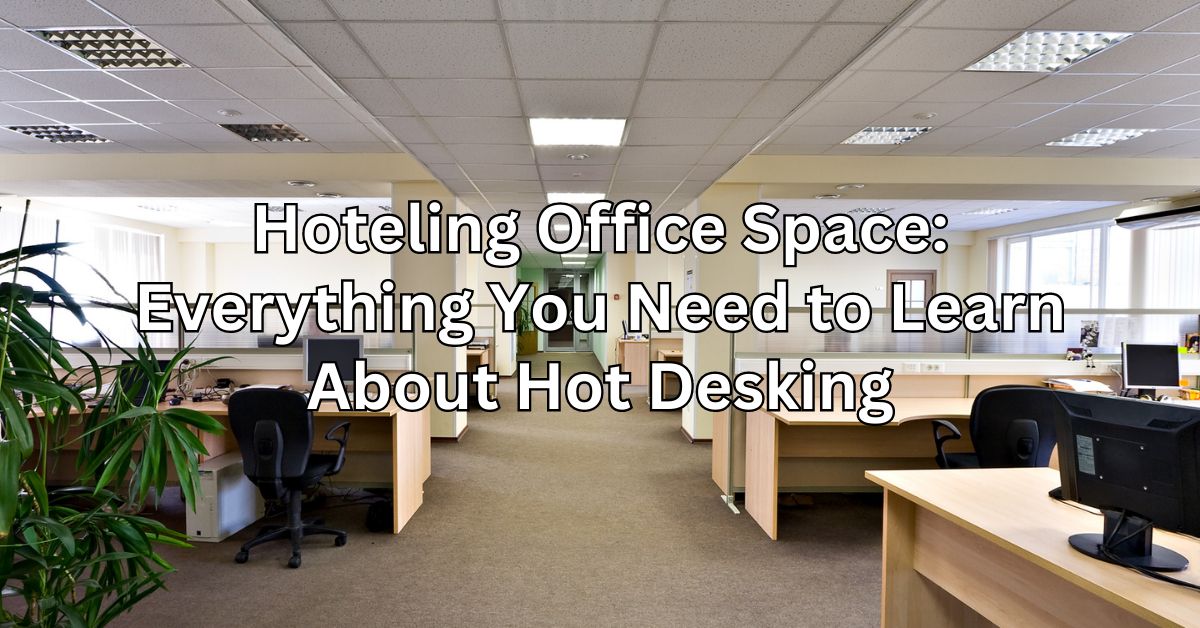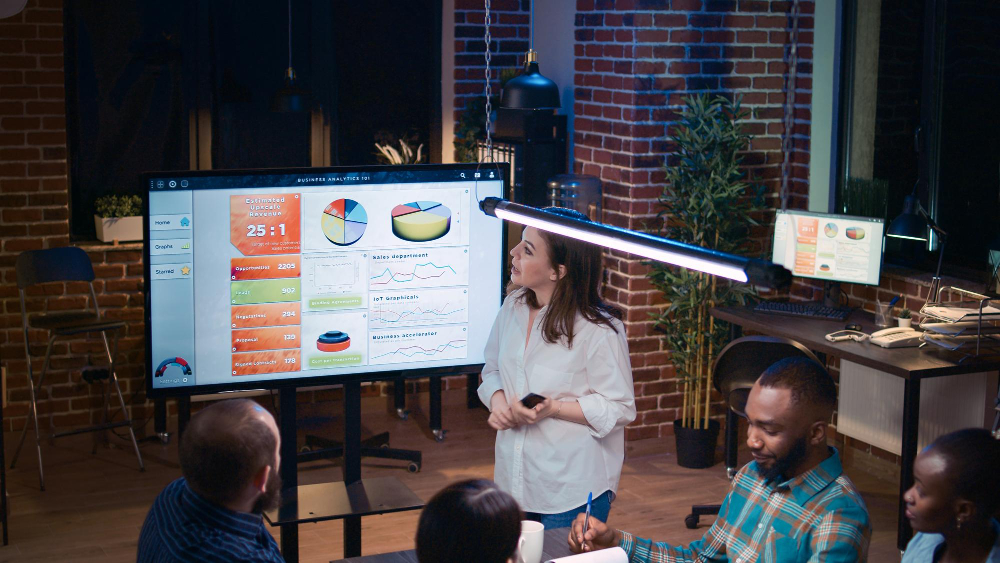Blog

Hoteling Office Space: Everything You Need to Learn About Hot Desking
Employees, management, and workflow processes are only some factors you need to consider with hot desking. Adapting changes in work setups can sometimes take a giant leap. It requires adjusting to working modifications as are necessary for office management optimization. In such cases, understanding what changes you will embark on is essential for seamless integration.
Hot Desking Defined: What Is Hot Desking?
Hot desking is a form of agile office design in which employees share open desk space on a priority basis rather than being given permanent desk locations. Employees are free to choose a desk and its location no matter what time or day it is as long as the desk is available. A Work-From-Home (WFH), hybrid, or mobile employees can hot-desk as this setting may be more efficient for them. Reducing costs, more availability, a flexible workplace, and enhanced collaboration are only some benefits of hot desking.
Integrate: Reap the Benefits of Hot Desking
The correct implementation of hot desking can guarantee seamless and optimized workflow in any industry. Beyond the obvious perks of mobility and adaptability, hot desking also has underlying advantages which include but are not limited to the following:
1. It encourages a fair and equitable workplace.
Hot desking promotes equality since it helps to level power dynamics by ensuring no one is given privileged treatment regarding where they sit at work. There is no “best” desk in a hot-desking setup because all the desks are open to anyone who needs them. As a result, it helps bridge the gap between on-site and remote employees regarding things like accessibility to resources. Hot-desking allows mobile employees to work in the office and use on-site resources whenever needed.
2. It maintains a positive work-life balance.
Employees appreciate having the flexibility to work on-site whenever they like. Since hot-desking does not establish permanent workstations, employees can choose their desired desk. Total separation between work and personal matters is evident. In such cases, hot desking promotes a better work-life balance, with advantages such as higher job satisfaction and enhanced productivity.
3. It boosts team member participation and engagement.
An engaged workforce is one in which employees feel a substantial emotional investment in their jobs and the company. Hot-desking makes it easier for employees to take charge, thus honing team member participation and engagement. Hot desking allows employees to choose when and where to get their work done without the pressure to be physically present during work hours. With a sense of control, they can better collaborate on tasks requiring a team effort.
4. It allows companies to venture with software integrations.
As companies aim to optimize their work processes digitally, hot desking can benefit from integrating office hoteling software. Employees can find satisfaction with hot desks; however, having the ability to reserve offices or desks can also be more efficient. It secures employees to have specific desks to work on at particular times and dates. Office space solutions can also increase the usability of your company’s amenities for employees to indulge in, thus keeping your company updated digitally for SaaS.
5. It allows you to cut expenses.
Real estate is one of the highest costs for businesses, so cutting back on how much space they need is an excellent way to save money. Hot desking is a real treat for cutting down on office clutter and saving space. It allows you to save space by not providing each team member with a private office desk.
Drawbacks: Challenges That You Should Consider
While hot desking has many benefits, keeping a few things in mind is necessary. Learn what challenges you might face from hot desking and pivot your way from these drawbacks.
1. It may lead to a lack of individualization.
While the hot-desk setup can encourage a better work-life balance, it also risks alienating employees. Some employees may feel less motivated to do their jobs without a set work area because they can’t display personal items or decorate their cubicles. You can attempt various methods to entice your employees, including offering rewards and regular feedback to boost workplace engagement and loyalty.
2. It may not be suitable in specific settings.
With the advent of hot desking being a top-of-the-line method for team member management, it might not work well for some. For administrative employees, programmers, and any work that demands consistency and support for traditional setups, hot desk may not be effective compared to having mobile workforces. Those that deal with massive amounts of information daily may need help moving data between their many workstations. Consider the nature of your team member’s work to make the most out of hot desking.
3. It could disrupt the communication process.
As most of the work done on-site requires communicating with employees at their desks, a hot-desking setup could make it difficult to deliver messages. It disrupts internal communications, such as emails and memos, and external ones, such as meetings and phone calls. Such solutions include a company-wide messaging system that requires employees to log in from any location and access information about their coworkers and projects.
4. It can be a health risk.
You can counter this drawback by having a mandatory clean-up and sanitization daily. Remember that the world is still undergoing a pandemic. Your team member’s health should be a top priority.
Conclusion
Hot desking the be the most effective and cutting-edge method to streamline an organized and employee-centered team member management approach. When done right, you can reap several benefits. However, challenges are inevitable, so learning the possible drawbacks is necessary to pivot your way out.



















































 Support
Support  Demo
Demo  Blog
Blog 


